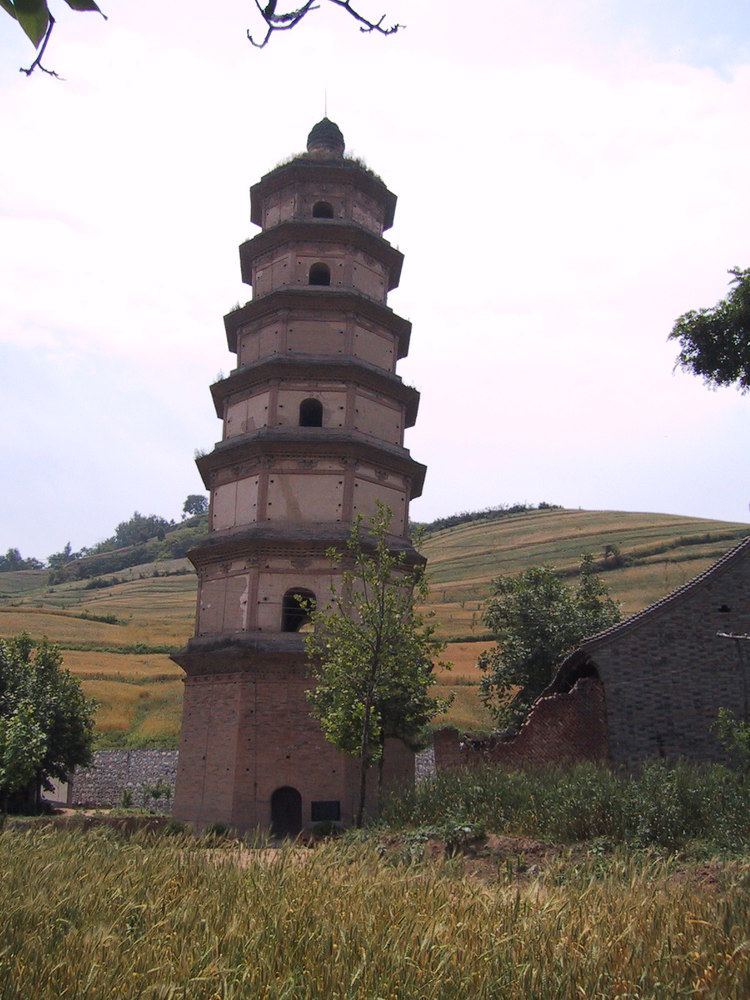 | ||
Similar Nestorian Stele, Louguantai, Hong Kong Sheng Kung Hui, Stele Forest, Bayunta | ||
Daqin pagoda
The Daqin Pagoda (大秦塔) is a Buddhist pagoda in Zhouzhi County of Xi'an (formerly Chang'an), Shaanxi Province, China, located about two kilometres to the west of Louguantai temple. The pagoda has been controversially claimed as a Nestorian Christian church from the Tang Dynasty.
Contents
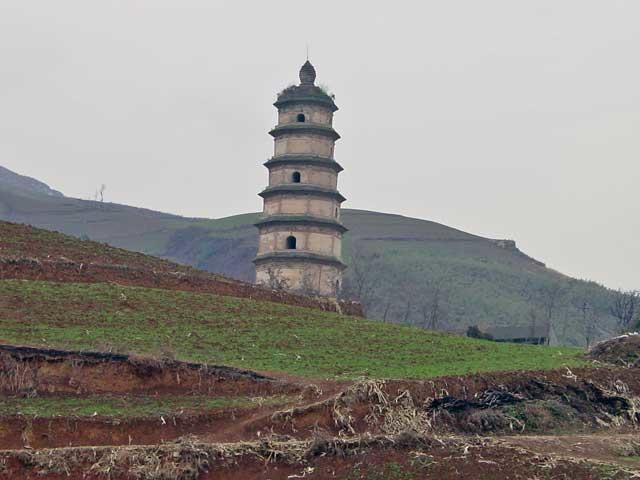
Etymology
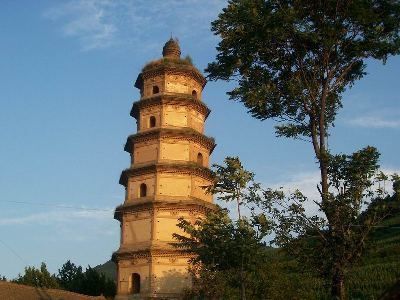
Daqin is the ancient Chinese name for the Roman Empire or, depending on context, the Near East, especially Syria.
History
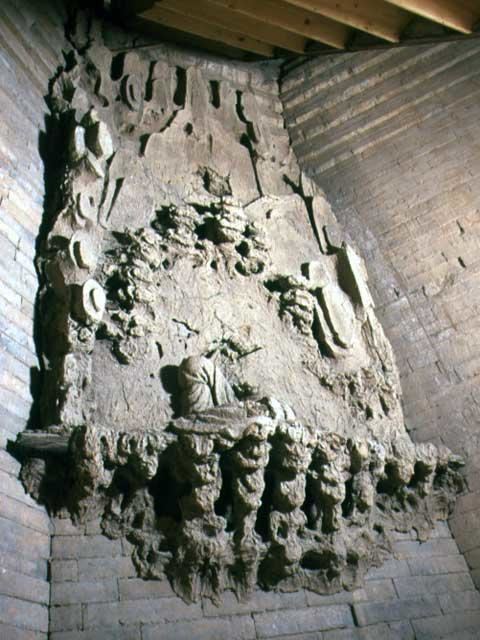
The Daqin Pagoda is first attested in 1064, when the Chinese poet Su Shi visited it and wrote a well-known poem about it, "Daqin Temple". His younger brother Su Zhe also wrote an "echoing" poem referring to the monks at the temple. An earthquake severely damaged the pagoda in 1556 and it was finally abandoned. Due to the earthquake, many of the underground chambers of the complex are no longer reachable.
Features
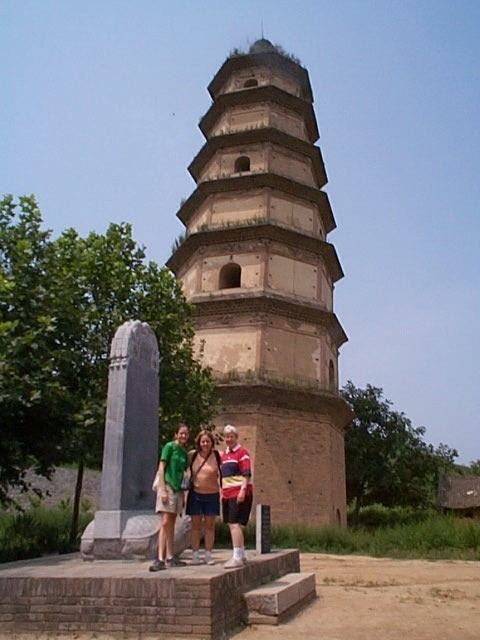
The seven-storeyed octagonal brick pagoda is about 32 meters high. Each side of the first storey measures 4.3 meters.
Is the pagoda a Nestorian Christian relic?
In 2001 the pagoda was claimed by Martin Palmer, the translator of several popular books on Sinology, including Zhuangzi and I Ching, as a Nestorian Christian church from the Tang Dynasty, in his controversial book The Jesus Sutras. According to Palmer, the church and the monastery were built in 640 by early Nestorian missionaries. Daqin is the name for the Roman Empire in the early Chinese language documents of the 1st and 2nd centuries, by the mid-9th century it was also used to refer to the mission churches of the Syriac Christians.
Supporters of Palmer's claims have drawn attention to details which suggest that the monastery was earlier a Christian church, including a supposed depiction of Jonah at the walls of Nineveh, a nativity scene (depiction of the birth of Jesus) and Syriac graffiti. The east-facing orientation of the complex is also advanced as evidence of its Christian origin since Chinese Daoist and Buddhist temple complexes face north or south.
As a potential stimulus to the district's tourist trade, Palmer's claims have been given wide publicity by the local authorities but have also received approbation by Chinese academics. The exterior of the pagoda and its surroundings were featured in the first episode of the 2009 BBC program "A History of Christianity". The program also featured an interview with Palmer by the presenter Professor Diarmaid MacCulloch.
Despite the publicity they have received, Palmer's claims are controversial, and have been dismissed by Michael Keevak, the author of The Story of a Stele, and by David Wilmshurst, the author of The Martyred Church: A History of the Church of the East.
